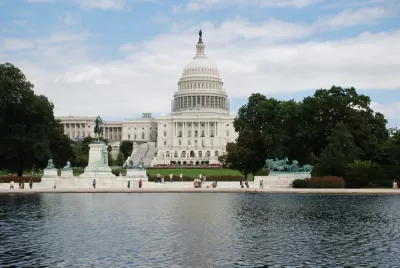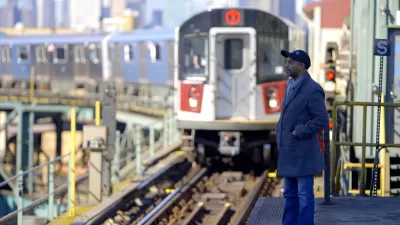Taking cues from the Trump Administration's recently-released infrastructure plan, the government intends to use a public-private partnership model to take on social challenges.

The Trump Administration's infrastructure plan relies, controversially, on states and localities to foot much of the bill for repairs and improvements. As Kriston Capps reports, the government's social impact program embraces a similar model.
Often touted by the Trump Administration, public-private partnerships serve as the basis for these social impact partnerships. Capps writes, "The new law imagines federally fueled, locally driven, public-private partnerships that cut costs for the government. The social goals are practical, from reducing the number of kids in foster care to reducing the number of low-income families receiving means-tested benefits." A new Federal Interagency Council on Social Impact Partnerships will be the gatekeeper here.
"In a typical P3, private investors may finance, build, operate, and maintain an infrastructure project, like a building or a bridge. Social impact bonds instead put that private capital toward a social program, with the government paying returns if certain outcomes are met."
These methods aren't entirely rooted in Trump-era policy. Similar bipartisan proposals have come up, including from the Obama administration. "The result could be a new market for best practices in local government—although it may mean more private companies and faith-based organizations getting involved in basic social services."
FULL STORY: A Brief Guide to 'Social Impact Partnerships'

Maui's Vacation Rental Debate Turns Ugly
Verbal attacks, misinformation campaigns and fistfights plague a high-stakes debate to convert thousands of vacation rentals into long-term housing.

Planetizen Federal Action Tracker
A weekly monitor of how Trump’s orders and actions are impacting planners and planning in America.

San Francisco Suspends Traffic Calming Amidst Record Deaths
Citing “a challenging fiscal landscape,” the city will cease the program on the heels of 42 traffic deaths, including 24 pedestrians.

Adaptive Reuse Will Create Housing in a Suburban Texas Strip Mall
A developer is reimagining a strip mall property as a mixed-use complex with housing and retail.

Study: Anti-Homelessness Laws Don’t Work
Research shows that punitive measures that criminalized unhoused people don’t help reduce homelessness.

In U.S., Urban Gondolas Face Uphill Battle
Cities in Latin America and Europe have embraced aerial transitways — AKA gondolas — as sustainable, convenient urban transport, especially in tricky geographies. American cities have yet to catch up.
Urban Design for Planners 1: Software Tools
This six-course series explores essential urban design concepts using open source software and equips planners with the tools they need to participate fully in the urban design process.
Planning for Universal Design
Learn the tools for implementing Universal Design in planning regulations.
Heyer Gruel & Associates PA
JM Goldson LLC
Custer County Colorado
City of Camden Redevelopment Agency
City of Astoria
Transportation Research & Education Center (TREC) at Portland State University
Jefferson Parish Government
Camden Redevelopment Agency
City of Claremont





























